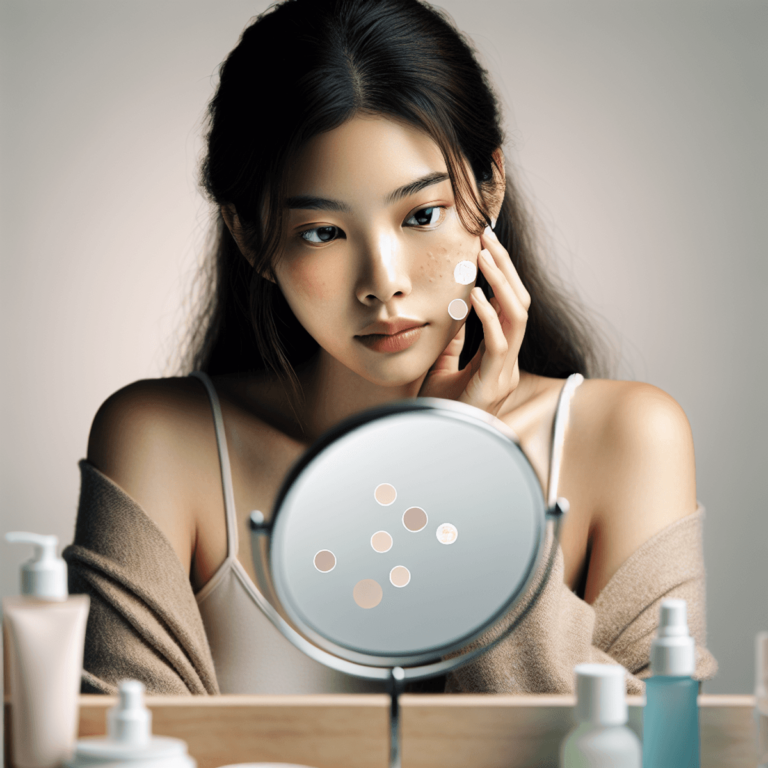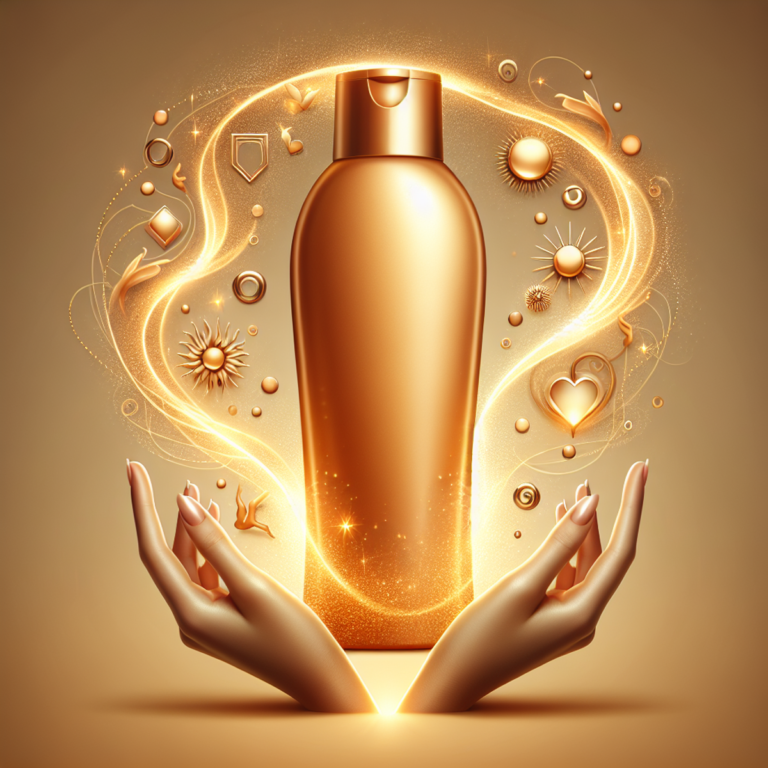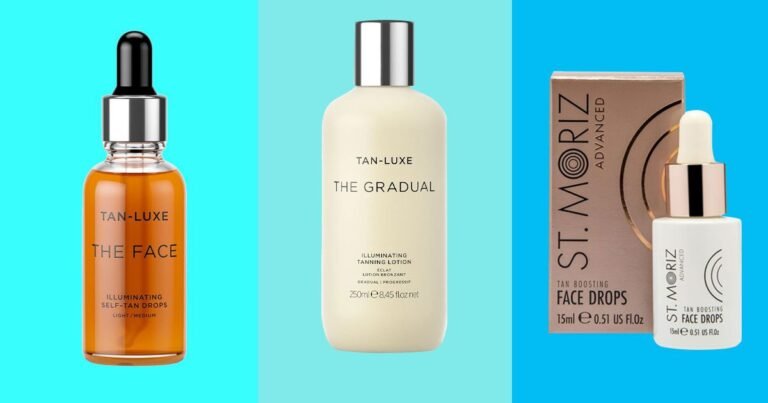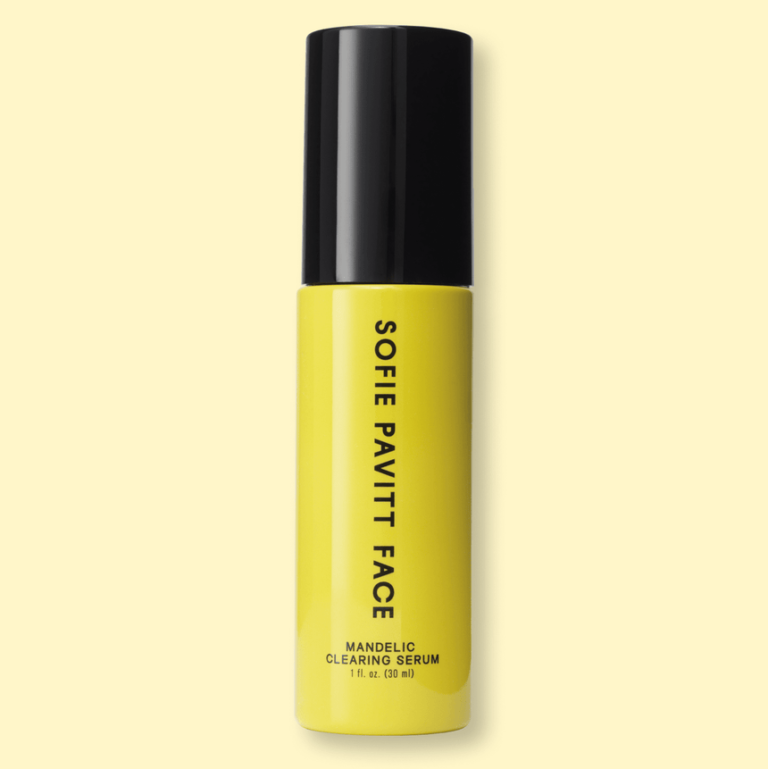How to get rid of breakouts
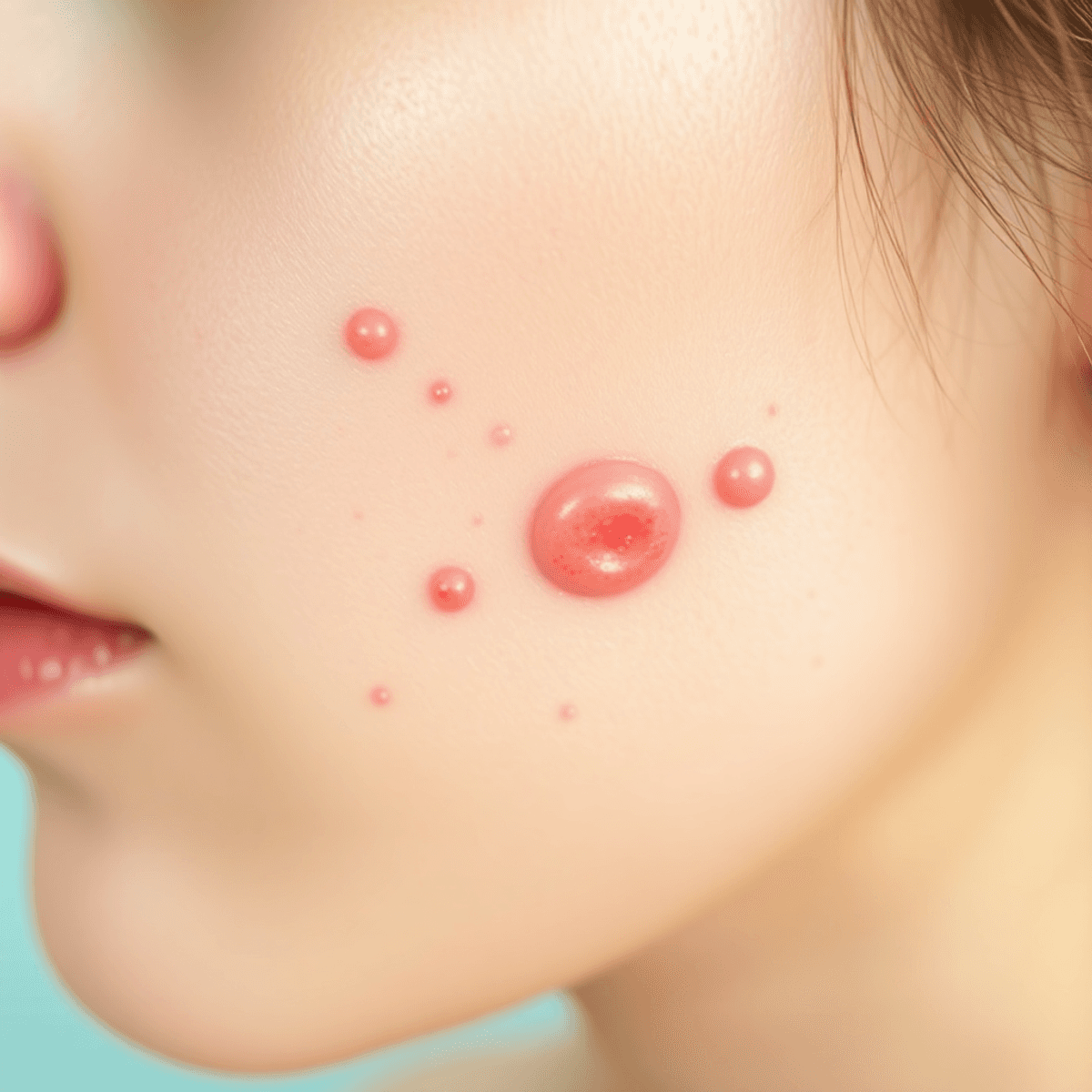
Introduction
Dealing with breakouts can feel like an endless battle against your own skin. These unwanted blemishes – from pesky pimples to stubborn cysts – don’t just affect your appearance; they can impact your self-confidence and daily life.
Breakouts occur when hair follicles become clogged with oil, dead skin cells, and bacteria. This blockage leads to inflammation, resulting in different types of acne:
- Whiteheads: Closed, clogged pores
- Blackheads: Open, clogged pores
- Papules: Small, red, tender bumps
- Pustules: Pimples with pus at their tips
- Nodules: Large, painful bumps deep under the skin
- Cysts: Deep, pus-filled, painful bumps
Getting rid of breakouts requires more than just spot treatments or quick fixes. Your skin needs a well-rounded approach that addresses multiple factors:
- Consistent skincare routine
- Proper product selection
- Lifestyle modifications
- Diet adjustments
- Stress management
Understanding your skin‘s specific needs and triggers is crucial for developing an effective treatment plan. By combining the right skincare products with healthy habits, you can achieve clearer, healthier skin. This guide will walk you through proven strategies to combat breakouts and maintain long-term skin health.
Understanding Breakouts
Breakouts can occur in different forms, and each type requires its own specific treatment methods:
1. Whiteheads and Blackheads
- Whiteheads appear as small, flesh-colored bumps with white centers
- Blackheads show up as dark spots due to oxidized oil in open pores
- Both result from clogged hair follicles with oil and dead skin cells
2. Papules and Pustules
- Papules present as small, red, tender bumps
- Pustules contain visible pus and exhibit inflammation
- These inflammatory acne types signal bacterial involvement
3. Nodules and Cysts
- Deep, painful bumps beneath the skin’s surface
- Can persist for weeks or months
- Often leave scarring without proper treatment
Your skin breaks out due to various triggers:
1. Hormonal Changes
- Increased androgen production
- Menstrual cycle fluctuations
- Pregnancy-related hormonal shifts
- Birth control adjustments
2. Lifestyle Factors
- Poor sleep patterns disrupt skin repair
- High-stress levels boost cortisol production
- Excessive sweating trapped under tight clothing
- Touching your face with unwashed hands
3. Environmental Influences
- Humidity levels affecting oil production
- Air pollution clogging pores
- Hard water leaving mineral residue
- Climate changes impacting skin balance
4. Dietary Connections
- High glycemic foods spiking insulin
- Dairy products affecting hormone levels
- Processed foods causing inflammation
- Dehydration compromising skin barrier
The severity of your breakouts often correlates with multiple factors working together. A pimple might start from excess oil production triggered by hormones, then worsen through bacterial growth from touching your face. Understanding these connections helps target the root causes rather than just treating surface symptoms.
Building an Effective Skincare Routine
Creating a consistent skincare routine is essential for managing breakouts effectively. Your daily regimen should focus on maintaining skin cleanliness, removing impurities, and supporting your skin’s natural healing process.
A well-structured skincare routine includes four fundamental steps:
- Cleansing – removes dirt, oil, and bacteria
- Exfoliation – eliminates dead skin cells
- Moisturizing – maintains skin barrier health
- Sun Protection – prevents hyperpigmentation
1. Cleansing
Proper cleansing forms the foundation of any effective skincare routine. Your skin accumulates various impurities throughout the day:
- Excess sebum
- Dead skin cells
- Environmental pollutants
- Makeup residue
- Bacteria
For Oily Skin:
- Choose gel-based or foaming cleansers
- Look for ingredients like:
- Salicylic acid (2%)
- Benzoyl peroxide (4-5%)
- Tea tree oil
- Wash twice daily with lukewarm water
- Avoid harsh scrubbing
For Sensitive Skin:**
- Select gentle, fragrance-free cleansers such as oil-based ones
- Beneficial ingredients include:
- Ceramides
- Glycerin
- Niacinamide
- Use mild water temperature
- Pat dry with a clean towel
Best Practices for Cleansing:
- Remove makeup completely before cleansing
- Use clean hands or a fresh washcloth
- Massage cleanser in circular motions for 60 seconds
- Rinse thoroughly to remove all product residue
- Change face towels regularly to prevent bacterial growth
A proper cleansing technique helps:
- Unclog pores
- Remove acne-causing bacteria
- Balance skin pH levels
- Prepare skin for treatment products
- Prevent new breakouts from forming
Your skin type determines the ideal cleansing frequency. Oily skin benefits from twice-daily cleansing, while sensitive skin might require only evening cleansing with a morning water rinse. Listen to your skin’s needs and adjust accordingly.
2. Exfoliation
Exfoliation plays a vital role in preventing breakouts by removing dead skin cells that can trap bacteria and clog pores. Your skin naturally sheds dead cells, but this process slows down with age and certain skin conditions, making manual intervention necessary.
Types of Exfoliation:
- Physical Exfoliants: Gentle scrubs with round beads, facial brushes, microfiber cloths, rice powder cleansers
- Chemical Exfoliants: AHAs (glycolic, lactic acid) for surface-level exfoliation, BHAs (salicylic acid) for deep pore cleansing, PHAs for sensitive skin types
The key to effective exfoliation lies in choosing the right method for your skin type and using it correctly. Sensitive or acne-prone skin benefits from chemical exfoliants, as physical scrubs can spread bacteria and irritate active breakouts.
Safe Exfoliation Tips:
- Start with once-weekly treatments
- Apply gentle pressure when using physical exfoliants
- Never exfoliate broken skin or active acne
- Follow with a hydrating moisturizer
- Stop if you notice redness or irritation
For stubborn under-the-skin pimples, BHA products work effectively by penetrating deep into pores. Those dealing with post-acne marks benefit from AHA products, which help fade dark spots and promote cell turnover.
Remember to limit exfoliation to 2-3 times per week. Over-exfoliation can damage your skin barrier, leading to increased oil production and more breakouts.
3. Moisturizing
Many people with acne-prone or oily skin skip moisturizer, believing it will make their skin greasier. This common misconception triggers a problematic cycle – when your skin lacks moisture, it compensates by producing excess oil, leading to more breakouts.
A non-comedogenic moisturizer acts as a protective barrier, helping your skin:
- Balance oil production
- Maintain healthy hydration levels
- Reduce inflammation
- Support skin barrier function
- Prevent environmental damage
Choosing the Right Moisturizer
Your moisturizer should match your skin’s specific needs:
- Gel-based formulas: Perfect for oily skin types, these lightweight options provide hydration without heaviness
- Lotion textures: Suitable for combination skin, offering balanced moisture
- Oil-free creams: Ideal for dry, acne-prone skin, providing deeper hydration without clogging pores
Key Ingredients to Look For
- Hyaluronic acid – attracts moisture without feeling heavy
- Niacinamide – regulates oil production
- Ceramides – strengthen skin barrier
- Glycerin – hydrates without clogging pores
- Aloe vera – soothes inflammation
Application Tips
Apply your moisturizer to slightly damp skin after cleansing. This technique locks in hydration and requires less product. Use gentle, upward strokes and avoid tugging at your skin. A pea-sized amount is typically sufficient for your entire face.
For severe breakouts, layer your moisturizer under any spot treatments. This approach prevents excessive drying while allowing acne medications to work effectively.
4. Sunscreen
Sunscreen plays a vital role in preventing post-inflammatory hyperpigmentation (PIH) – the dark spots left behind after acne heals. UV exposure can darken these marks, making them more noticeable and longer-lasting. Daily sunscreen application helps protect healing skin and maintains an even complexion.
Choosing the Right Sunscreen for Acne-Prone Skin:
- Look for “non-comedogenic” on the label
- Select broad-spectrum protection (UVA/UVB)
- Aim for SPF 30 or higher
- Consider mineral-based options with zinc oxide or titanium dioxide
Best Formulations for Breakout-Prone Skin:
- Gel-based sunscreens
- Lightweight lotions
- Oil-free formulas
- Water-resistant options for active lifestyles
Application Tips:
- Apply as the last step in your morning skincare routine
- Use approximately 1/4 teaspoon for your face
- Reapply every 2 hours when outdoors
- Layer under makeup for daily protection
Many people skip sunscreen, fearing it will trigger breakouts. Modern formulations offer effective protection without clogging pores. Physical sunscreens with zinc oxide provide additional benefits – they can calm inflammation and reduce redness associated with active breakouts.
For sensitive, acne-prone skin, patch test new sunscreens on a small area for 24-48 hours before applying to your entire face. This practice helps identify potential irritants and ensures your chosen product won’t trigger new breakouts.
Making Lifestyle Adjustments for Clearer Skin
Your daily habits play a crucial role in managing breakouts. A holistic approach to skincare extends beyond topical treatments – it encompasses your lifestyle choices, particularly what you put into your body.
1. Diet and Hydration
The food you eat directly impacts your skin’s health. Research shows that certain dietary choices can trigger or reduce breakouts:
Foods That Support Clear Skin:
- Omega-3 rich fish (salmon, mackerel)
- Zinc-packed nuts and seeds
- Antioxidant-loaded berries
- Green leafy vegetables
- Probiotic-rich yogurt
- Vitamin A-rich sweet potatoes
Foods to Limit:
- High-glycemic foods
- Processed snacks
- Dairy products
- Sugary beverages
- Refined carbohydrates
Hydration Guidelines for Healthy Skin:
- Drink 8-10 glasses of water daily
- Set reminders on your phone for regular water intake
- Track water consumption using apps
- Include hydrating foods like cucumber and watermelon
- Replace sugary drinks with herbal teas
Your skin needs proper hydration to maintain its barrier function and natural detoxification processes. Water helps flush out toxins, deliver nutrients to skin cells, and maintain skin elasticity.
Pro tip: Keep a reusable water bottle at your desk or in your bag. Fill it with fresh water and add slices of lemon, cucumber, or mint for natural flavor.
A balanced diet rich in vitamins A, C, E, and zinc supports collagen production and skin repair. These nutrients work together to:
- Regulate oil production
- Reduce inflammation
- Support skin cell turnover
- Protect against environmental damage
- Promote healing of existing breakouts
Remember to maintain consistent eating schedules and avoid late-night snacking, which can disrupt your body’s natural repair processes during sleep.
2. Avoiding Irritants and Maintaining Hygiene
Your hands carry countless bacteria throughout the day, making face-touching a major trigger for breakouts. Each time you touch your face, you transfer these bacteria directly onto your skin, potentially leading to new pimples and inflammation.
Common Face-Touching Scenarios to Avoid:
- Resting your chin on your hands while working
- Checking your phone while pressing it against your face
- Unconsciously touching your face during stress
- Picking at existing blemishes
- Popping active pimples
Picking at breakouts might seem satisfying, but it creates micro-tears in your skin. These tears become entry points for bacteria, leading to:
- Increased inflammation
- Slower healing time
- Post-inflammatory hyperpigmentation
- Permanent scarring
- New breakouts around the affected area
Practical Tips to Break Face-Touching Habits:
- Keep your hands busy with stress balls or fidget toys
- Use speakerphone or headphones for calls
- Place sticky note reminders on your desk or mirror
- Keep tissues nearby for wiping sweat or oil
- Wear clean face masks when needed
- Use pimple patches to cover active breakouts
Essential Hygiene Practices:
- Clean your phone screen daily with antibacterial wipes
- Sanitize frequently touched items like keyboards and doorknobs
- Wash hands thoroughly before applying skincare products
- Keep hair tied back and away from your face
- Use clean towels for face drying
- Avoid sharing makeup tools or applicators
These small changes in your daily habits create significant improvements in preventing new breakouts and allowing existing ones to heal properly.
3. Practicing Good Hygiene Habits
Your pillowcase can be a breeding ground for bacteria, dead skin cells, and leftover hair products that get transferred to your face while you sleep. By using a clean pillowcase, you can create a healthier environment for your skin to repair itself overnight.
Essential Pillowcase Maintenance:
- Replace your pillowcases every 2-3 days
- Choose silk or cotton pillowcases to minimize friction
- Have multiple pillowcases on hand to switch between
- Wash your pillowcases in hot water to eliminate bacteria
Additional Hygiene Tips:
- Clean your phone screen daily with antibacterial wipes
- Wash your makeup brushes once a week
- Get rid of old makeup products every 3-6 months
- Tie your hair back while sleeping to avoid oil transfer
- Use fresh towels each time you dry your face
These simple changes can help create a cleaner environment for your skin. Bacteria thrive in warm, damp places, so it’s important to regularly clean your bedding and beauty tools to prevent build-up that can lead to breakouts. By incorporating these hygiene practices into your routine, you can maintain clear skin in between your regular skincare regimen.
Seeking Professional Help When Needed
If you have persistent breakouts that don’t respond to over-the-counter treatments, it’s time to see a dermatologist. Look out for these warning signs:
- Deep, painful cysts that leave scars
- Widespread acne covering large areas of your face, chest, or back
- Emotional distress affecting your daily life
- No improvement after 3 months of consistent home treatment
A dermatologist can prescribe powerful treatments that aren’t available over the counter:
- Prescription-strength topical medications
- Oral antibiotics
- Isotretinoin for severe cases
- Hormonal treatments
- Professional extractions and chemical peels
Don’t hesitate to seek professional help – early intervention can prevent scarring and reduce the emotional impact of severe acne. Many insurance plans cover dermatology visits for acne treatment, making professional care accessible. Your dermatologist will create a personalized treatment plan targeting your specific type of breakouts and skin concerns.
FAQs (Frequently Asked Questions)
What are the common types of breakouts?
Common types of breakouts include pimples, cysts, and whiteheads. Each type has distinct characteristics: pimples are typically red and inflamed, cysts are larger and deeper under the skin, while whiteheads are small and covered with a thin layer of skin.
What causes breakouts?
Breakouts can be caused by a variety of factors including hormonal changes, diet, stress, and improper skincare. Hormonal fluctuations can lead to increased oil production, while certain foods and stress levels can exacerbate skin conditions.
How can I effectively manage acne-prone skin?
To manage acne-prone skin effectively, it is essential to follow a comprehensive skincare routine that includes cleansing to prevent clogged pores, regular exfoliation to remove dead skin cells, moisturizing with non-comedogenic products, and applying sunscreen to protect the skin.
Why is cleansing important for preventing breakouts?
Cleansing is crucial as it helps prevent clogged pores and reduces bacteria on the skin’s surface. Choosing a suitable face wash based on your skin type (oily or sensitive) can significantly impact the effectiveness of your skincare routine.
What should I look for in a moisturizer for acne-prone skin?
For acne-prone skin, it’s important to choose lightweight, oil-free moisturizers that are labeled as non-comedogenic. This ensures that they won’t clog pores or worsen existing blemishes while still providing necessary hydration.
How does sunscreen benefit those with acne-prone skin?
Sunscreen protects the skin from harmful UV rays which can exacerbate acne scars and lead to further irritation. Using a non-comedogenic sunscreen helps shield the skin without contributing to breakouts.



